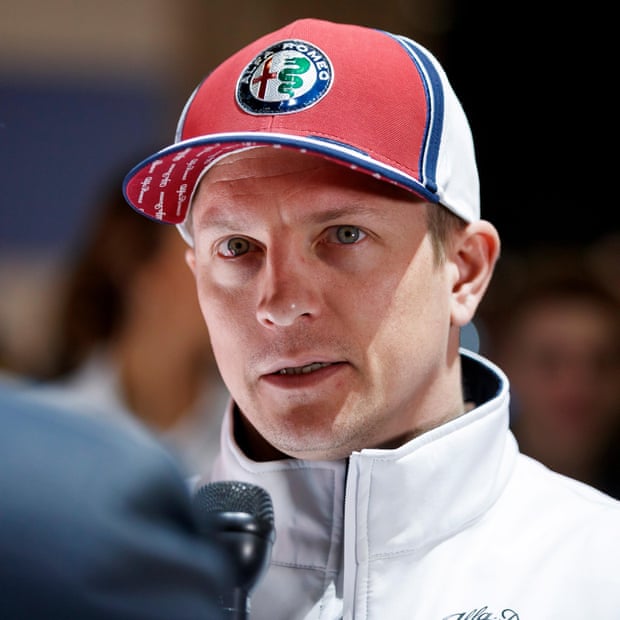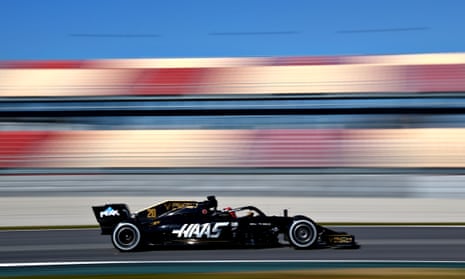Skill, drama, spectacle and of course entertainment are the elements that should drive Formula One with, hopefully, a fine narrative to push the show along. Netflix certainly believes the sport has a story to tell, even though the two biggest names involved – Ferrari and Mercedes – refused to play ball when their cameras roamed the paddock last season. The result, Formula 1: Drive To Survive, is released on Friday and as it turns out, Netflix perhaps achieved something even more intriguing in their absence.
The 10-part series was made by executive producer James Gay-Rees, who was behind the biopic documentaries Senna and Amy. The hyperbolic, faintly ridiculous title aside, he and Netflix have made a very decent fist of it. The fact that it exists at all is indicative of how the sport has changed. Such a project would have been unthinkable under Bernie Ecclestone, and it shows that F1’s owners, Liberty Media, understand that they need to sell that drama, spectacle and entertainment.
That said, the series will not prove particularly revelatory to serious fans. Rather it is a pleasing recounting of the 2018 season, with some candid footage that is fascinating at times. There is plenty of slo-mo luxuriating in accidents and, inevitably, some hoary rock licks. Just once, it would be nice for a director to break that mould and see if anything other than tedious soft metal goes well with racing. Why not go mad, and try The Fall or Kitchens of Distinction? But that isn’t a concern for Netflix or Liberty. In terms of enticing in casual viewers and perhaps converting them, they have a fine appetiser for the new season, which begins in Melbourne next week.
Quick GuideF1 2019: Teams and drivers
Show

There have been plenty of drivers switching seats in the buildup to the new season. Daniel Ricciardo has left Red Bull for Renault, with Carlos Sainz moving to McLaren after Fernando Alonso's departure. Frenchman Pierre Gasly has been promoted from Toro Rosso to replace Ricciardo, with British-Thai driver Alex Albon taking his place.
Charles Leclerc moves from Sauber to partner Sebastian Vettel at Ferrari, trading places with Kimi Räikkönen (pictured), who will race for a rebranded Alfa Romeo team. Force India are now known as Racing Point, with Lance Stroll joining them from Williams.
The British constructor welcomes two new drivers –home hopeful and Formula 2 world champion George Russell and Robert Kubica, who makes his F1 return eight years after suffering life-threatening injuries in a rallying accident.
How the teams line up
Alfa Romeo Kimi Räikkönen (Fin), Antonio Giovinazzi (It)
Ferrari Sebastian Vettel (Ger), Charles Leclerc (Mon)
Haas Romain Grosjean (Fr), Kevin Magnussen (Den)
McLaren Lando Norris (GB), Carlos Sainz (Sp)
Mercedes Lewis Hamilton (GB), Valtteri Bottas (Fin)
Racing Point Sergio Pérez (Mex), Lance Stroll (Can)
Red Bull Pierre Gasly (Fr), Max Verstappen (Neth)
Renault Daniel Ricciardo (Aus), Nico Hülkenburg (Ger)
Toro Rosso Alexander Albon (Thai), Daniil Kvyat (Rus)
Williams George Russell (GB), Robert Kubica (Pol)
That said, those viewers may wonder why there is so little footage of the two title protagonists. Ferrari’s decision not to take part, until limited access was granted after the Italian Grand Prix, was not unexpected – under former team principal Maurizio Arrivabene, the team had a bunker mentality. Mercedes’ decision was more surprising, given they are generally very good in terms of access to the media.
Their argument was that they did not want to be distracted from competing for the world championship. The show’s other executive producer, Paul Martin, believes they did a disservice to the fans and the sport by not taking part. Yet their absence has allowed other stories room to breathe, which is no bad thing.

Taking centre stage and to a certain extent stealing the show is the Haas team principal, Guenther Steiner. The Italian is captivating. A man who is polite, calm and considered in conversation behind the scenes has an impressively acerbic wit and likes to eff and jeff with an alacrity that is glorious.
His driver, Romain Grosjean, is often on the receiving end, with Steiner exclaiming during a race: “Just tell him to focus on driving and not fucking whinge. Fucking hell”. Later at a team dinner, Steiner laughingly refers to an out-of-favour Grosjean’s absence. “Romain is not here,” he says. “Maybe he is not here because he doesn’t have any points. Or I didn’t invite him because he doesn’t deserve any food”.
After two wheels were not correctly installed at the Australian Grand Prix, costing Haas potentially their best ever finish, Steiner is magnificently blunt as he confesses to team owner Gene Haas. “We could have looked like rock stars,” he says. “But now we look like a fucking bunch of wankers. A bunch of fucking clowns.”
The mechanic responsible is later seen apologising, red-eyed and visibly distraught. This telling moment emphasis what the series has achieved in capturing the human behind the F1 spectacle. With mechanics usually helmeted and anonymous, the scene is a reminder that very real people and genuine emotion still lie at the heart of the sport.
These traits are captured repeatedly. Red Bull’s team principal, Christian Horner, suggests that looking after donkeys would be easier than managing his drivers, during a season of clashes which ended in Daniel Ricciardo’s departure for Renault. Then we have McLaren’s CEO, Zak Brown, coping with a woeful car and the imminent departure of Fernando Alonso, and Claire Williams, the Williams deputy principal with the worst car on the grid, left questioning her own ability to do the job.
There is an honesty to much of the series that is refreshing, especially in a sport where the volume of spin and secrecy often leaves little of substance. In a series that Liberty doubtless hope will help promote the sport, it was impressive that Steiner’s accurate description of one of the major issues facing F1 made the cut. He is, as ever, right on the money. “You want to see action, drama, the underdog getting a good result,” he says. “Each race should have a story and that story should not always be Mercedes or Ferrari wins. Because that story gets old pretty quick.”
